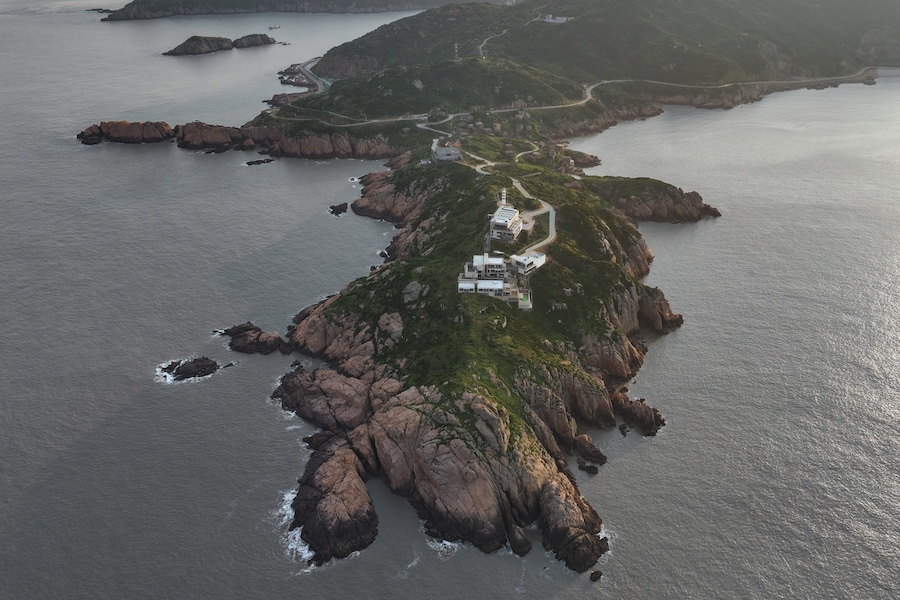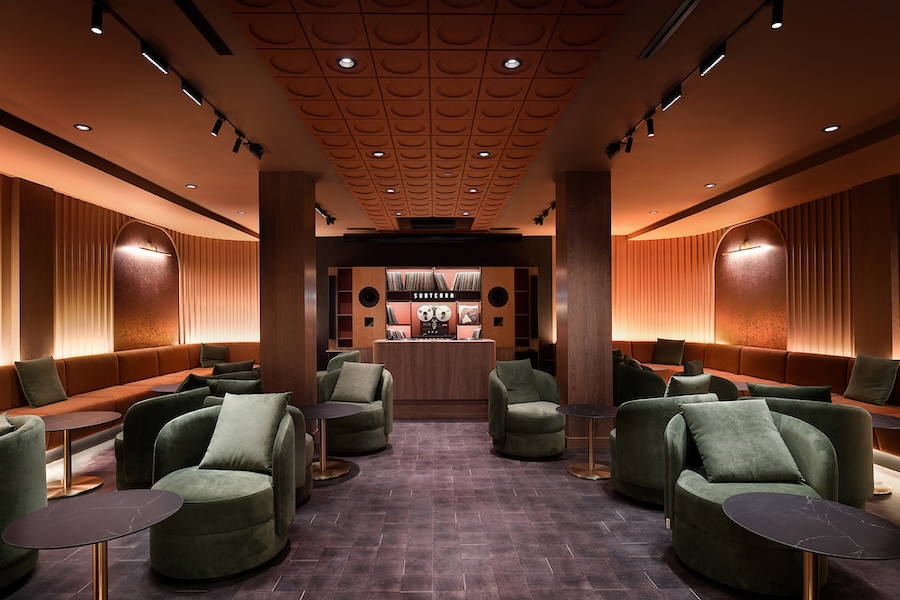Hangzhou-based architecture firm WJ Studio has unveiled Lost Villa – Huanglong Island Lighthouse Hotel, a project that reimagines tourism on one of China’s remote island outposts.
Located in Shengsi County, part of the Zhoushan archipelago in the East China Sea, Huanglong Island is known for its steep rocky cliffs, stone houses, and fishing traditions, but, like many rural areas, it faces depopulation and aging demographics.
As a result, WJ Studio approached the project as both a hospitality destination and a rural revitalization effort.
Architecture that speaks to the land
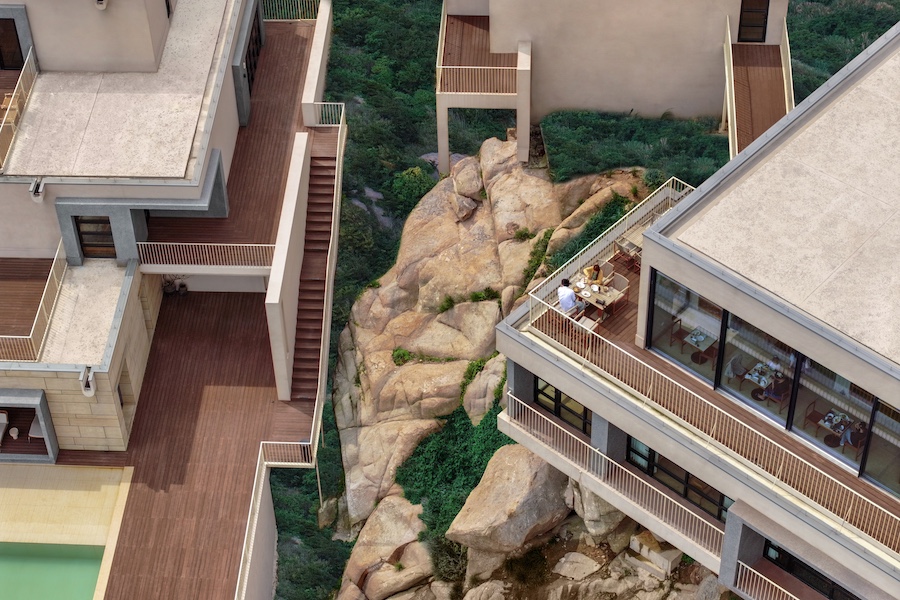
The design organizes the hotel into three clusters—the Lighthouse Hotel, the Cliffside Hotel, and the Village Hotel—anchored in the fabric of the site, Dongjutou Village.
Set atop reefs with elevation changes of nearly 100 feet, the Lighthouse Hotel adapts to the rugged topography with a stepped architectural massing that blends into the mountain slope and frames multi-angle views of the sea. The architecture echoes the scale and materiality of the island’s stone dwellings, while suspended foundations preserve the rocky landscape below.
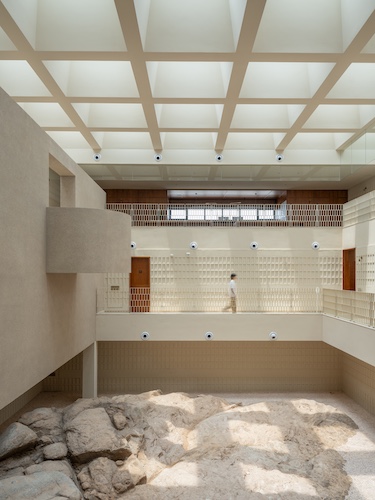 Inside Huanglong Island Lighthouse Hotel
Inside Huanglong Island Lighthouse Hotel
Inside, the design unfolds through a carefully choreographed spatial sequence described as “hidden-peek-open.” Pathways follow the contours of the reef, guiding guests through intimate glimpses of light and water before revealing sweeping vistas of the boundless sea.
In the main rock hall, skylights cast sunlight across preserved reef stones, blurring the boundary between indoors and outdoors.
Village-format guestrooms
Guestroom clusters reference the village’s tiered layout, with orientations and full-height windows calibrated to the changing directions of sunrise. Framed views, natural ventilation, and the sound of waves immerse visitors in what WJ Studio calls “human time”—moments when architecture pauses to frame the experience of place.
A standout architectural feature is Block A, which centers around an expansive rock hall where weathered reef stones remain preserved at the building’s base. The structure acts as a protective canopy, allowing guests to experience the texture of ancient stones up close. Skylights filter natural light onto the rugged rocks, creating an immersive connection between guests and the island’s geological history.
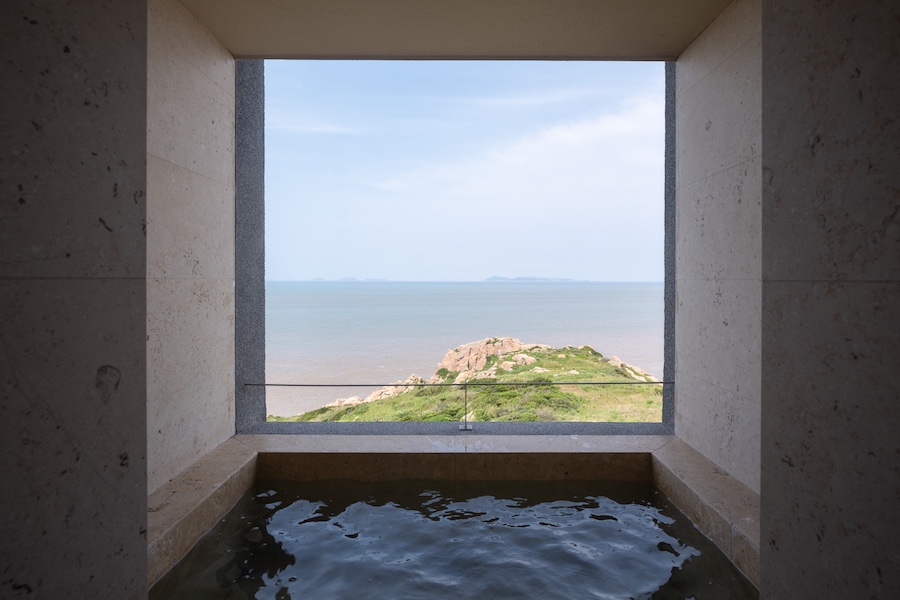
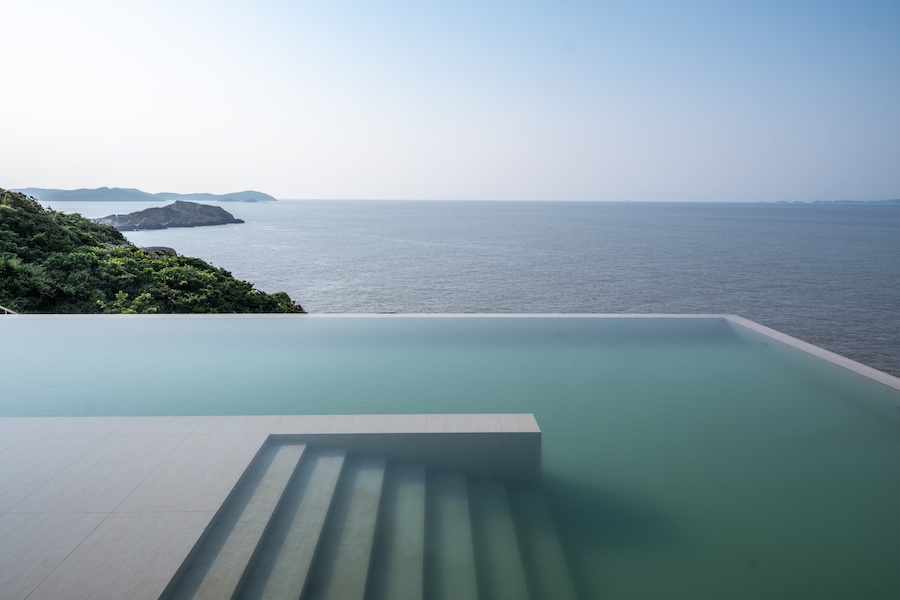
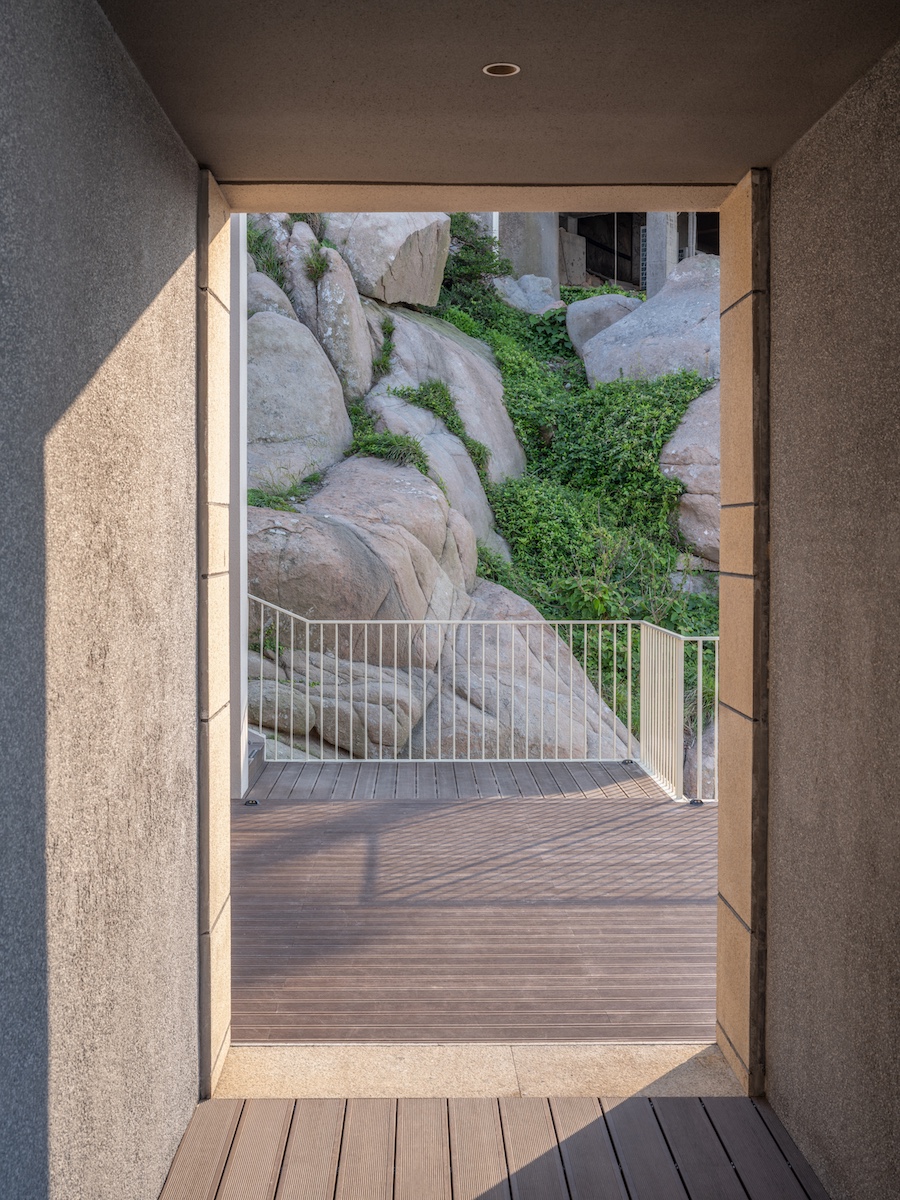
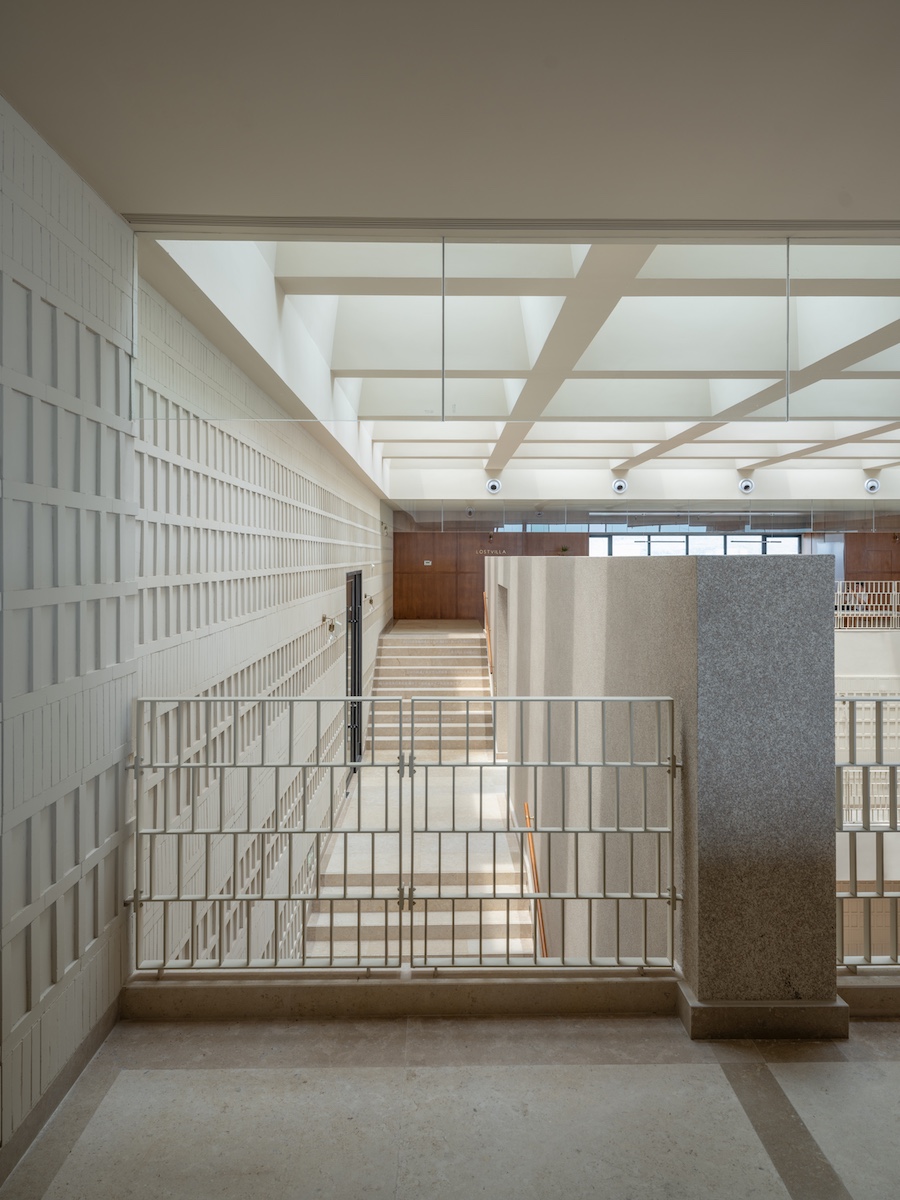
More from HD:
Kusheda Mensah’s Modular Pieces Foster Connection
Behind the Design: Belden House & Mews
Sustainable Architecture Spans Climates and Continents

